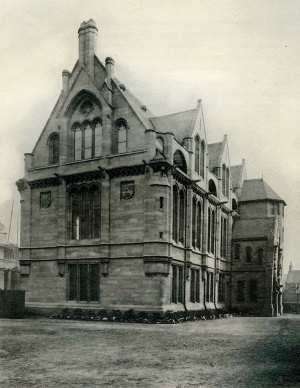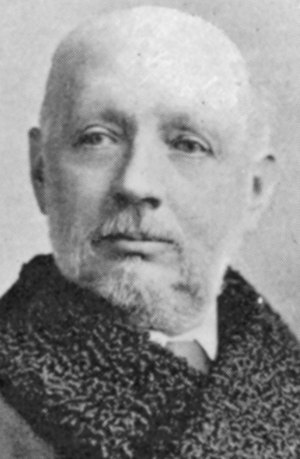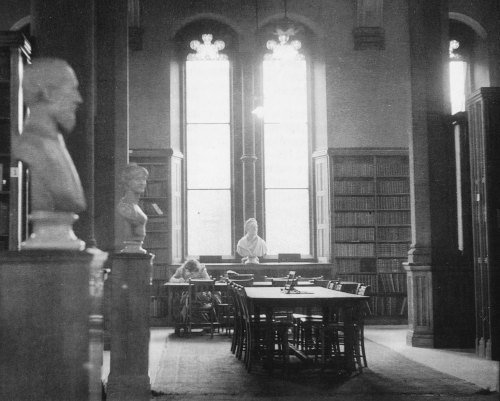The Christie Library
The Christie Library was built in 1895–8. It was the gift of Richard Copley Christie – historian, bibliophile, lawyer and executor of Joseph Whitworth.

Christie was the son of a Manchester mill owner (Lorenzo Christie) who lived in Edale in the Peak District. Being of weak health, Richard was educated at home before entering Lincoln College, Oxford, where he became a pupil and friend of Mark Pattison, famed as a historian of learning who preached that scholarship was the core vocation of universities. This was not then a common view, except in Germany.
He returned north, aged 23, as Professor of Ancient and Modern History at the newly founded Owens College, then housed on Quay Street in central Manchester. The next year, 1854, he also taught political economy and commercial science. Having originally intended to study law, he registered as a trainee barrister at Lincoln's Inn. In 1855 he added law to his professorships at Owens and in 1857 he began his notable Manchester practice in commercial law.
Christie was a keen supporter of education for working men, as well as higher education; throughout his life he promoted the college and the subsequent University. The growth of his legal practice caused him to withdraw from his teaching work by 1869, but he continued his studies of the Renaissance. For many years he spent his summer holidays researching in France, and, in 1880, he published a major study of Étienne Dolet, scholar, printer and religious martyr. Christie was a lifelong supporter of local history, bibliography and the improvement of libraries.

He was very successful as a lawyer and was a close associate of the engineer Sir Joseph Whitworth. After Whitworth died in 1887 Christie chaired Whitworth's company for a decade, before it was merged with Armstrong's of Newcastle. He was also one of the three trustees to whom Whitworth left his fortune. Christie paid for Whitworth Hall and from his own resources he funded the building of the Christie Library. He gave 75,000 volumes which he had himself collected, mostly in connection with his studies of the Renaissance. This gift of books, now mostly housed at the University's John Rylands Research Institute and Library on Deansgate, is especially notable for the early printed books on which Christie was a world authority. Christie's wife helped persuade him to give funds for a 'cancer pavilion', opened in 1892, from which the Christie Cancer Hospital in Withington developed.
The Library's gothic architecture, by Alfred Waterhouse, is more relaxed than the buildings which front onto Oxford Road. The Library connects with the slightly later Whitworth Hall, and there was once to have been a bridge linking it with the main building. The stained-glass window by the staircase in the Christie Library shows Christie with his books, along with two of his Renaissance heroes: the Dutch humanist Erasmus and the Venetian printer Aldus, whose pioneering small-format books Christie collected. The University's marvellous holdings of Aldines will be celebrated in 2015, the 500th anniversary of Aldus's death.

The collections in the Christie Library served the whole University, excepting medicine, until the Arts Library was opened in 1937; in 1982, the science (and medical) collections were moved to an extension of this new library. The Christie Building was then redeveloped as offices for the Directorate of Development and Alumni Relations - with the much-appreciated Christie Bistro on the first floor. Among the great and good there commemorated you can find a (bald) bust of Robert Angus Smith, a local Victorian chemist who discovered acid-rain, and a portrait of Lord Woolton, whose famous meatless pie kept Britons fed during World War II.
